QuestionDear Chris,
We recently received a fish tank (1 gal.) as a gift for my son. Having never had a fish before, we are new to fish ownership and care.
We put 1 goldfish in the tank. The problem I am having is that the water starts smelling stagnant after 2-3 days. There is a air filter in the tank. What is causing this odor in the tank and how do I remedy this problem.
Thanks, Lisa
AnswerHi Lisa;
This is common in new tanks and even more common in new tanks with goldfish because they make more waste than many other fish. The smell is from ammonia made by it's fish waste. You will need to replace 25% of the water every day or two in his existing tank just to keep him alive for awhile. The ammonia is burning his skin, gills and eyes and the water changes will relieve his suffering as well as helping the smell from the water.
Goldfish actually need a bigger tank like 10 gallons or more per fish as they grow. They are deep-bodied messy fish that just need lots of room to make their mess in. They also need a good filter. If there is just a little air bubbler in there it isn't enough for these messy guys. Goldfish get 6 to 8 inches long and live to be 10 years or more if well cared for. Unfortunately, most of them live only a few weeks at best. It's a shame considering their potential. The fish store people are just not doing their job and telling people these important facts. Or, they are inexperienced and don't know about it either.
If you aren't able to get a larger tank, the smaller one is perfect for a male betta or a pair of guppies. Personally, I'm always glad for any excuse to get a bigger tank. (big grin) So, I say.....go for it!
Here is my article with info on new tanks that will help you get started;
**********
New Tank Syndrome or Break-in Period
So you have a new tank and you filled it up, put the filter together, mounted the heater into place and turned on the lights. You have all the plants and decorations where you want them....
You are ready for fish.
But, your filter is not ready for a full tank of fish yet.
The filter is running and moving the water and cleaning out crud, right? Of course!
But a very important part of your filter is the part you can't see. An aquarium filter removes the larger visible stuff, but it also must remove the dissolved fish waste that turns into ammonia in the water. To do this, special bacteria must grow in the filter system and on the particles of gravel in the bottom of your tank. This process occurs even on a limited scale in little fish bowls that have no filter in them.
This is "New-Tank Syndrome" or the "Break-in Period". The entire process takes 6 to 8 weeks to complete because these "nitrifying" bacteria grow quite slowly.
Start off with only one or two hardy fish (no more than 2 total inches of fish) for every ten gallons of water and don't add more until the 6 to 8 weeks has gone by. Hard to be patient, but it is worth it to keep your fish alive and healthy. As a matter of fact, the bacteria cannot develop without fish in the tank. You can let that tank sit forever without fish in it, but as soon as the first fish goes in the process begins. Avoid changing the filter pads during break-in. This removes the bacterial colonies that are essential to a balanced aquarium. You can rinse the filter pad out in a container of aquarium water. This will preserve most of the bacteria colonies while still allowing your filter to flow freely. Even using bacteria additives and water conditioners when you first set up the tank will not make a tank begin the cycle by itself. If there are no fish to provide food (fish waste) for the bacteria, the beneficial bacteria cultures will die and you will have to start the colonies all over again once fish are added to the tank. Once the tank has completed the initial cycle, you can change the filter pads every 4 weeks or so. But for now, just rinse them.
Feed your new fish VERY lightly. Any excess food will cause additional waste your system cannot afford to have right now. If you see food floating around or lying on the plants and gravel after five minutes, too much food is going into the tank. Cut back a little each time you feed until it is ALL gone 5 minutes after you feed them. Feed them once a day.
During this "break-in period" your tank will become cloudy and milky looking. You may have to tolerate this for the entire break-in period but it is only temporary. Changing 25% of the water three times a week until the break-in period is over helps a great deal. Changing water reduces the ammonia and nitrites that rise while the bacteria continues to multiply. If ammonia and/or nitrites become too high, your fish will become stressed and possibly die. Use a good water conditioner when you replace the water and make sure it is the right temperature to avoid shocking your fish.
When the break-in is over after 6 to 8 weeks and there are no nitrites or ammonia present in the water you can slowly add more fish. Add one or two every week until you reach the desired population. This allows the bacteria to adjust to the new population every time before adding more. Monitor the nitrites and ammonia to be sure they don't come up. If they do, make a 25% water change and check them again. Don't add the next fish until the levels are down again.
The safe maximum population for any size tank is one inch of adult fish for every gallon of water in the tank. Do some research to be sure of the fish you are interested in. Even though they are small when you buy them, you have to base your population calculations on full-sized adult fish. Many hobbyists have up to two inches per gallon but this can be risky. If a water quality issue arises or a disease occurs it will spread fast and furious in an over-populated tank. In any case, 25% water changes every week to two weeks are absolutely essential for the health of your fish.
Following these guidelines will help you get your new tank on the right track.
**********
Followups welcome
At Your Service;
Chris Robbins
Come on over and join us on the freshwater fish forum at About.com to get even more information too;
http://freshaquarium.about.com/od/questionsanswers/a/naavigateforum.htm
My member name is ChrisR62. See You There!

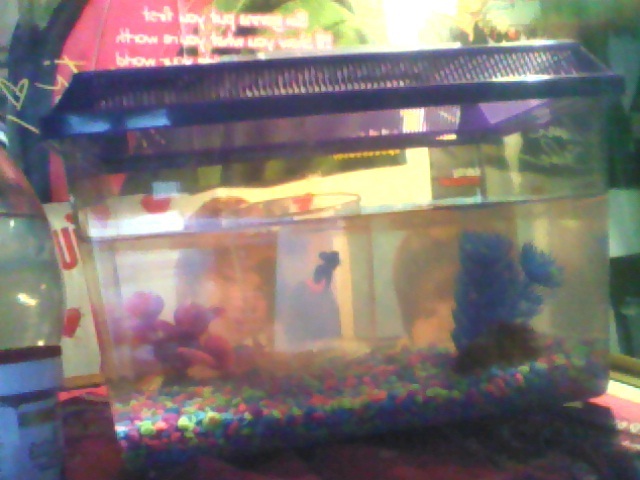 Mating My Bettas
Question
My Betas Geno and Maje
Hi, I got a male crown
Mating My Bettas
Question
My Betas Geno and Maje
Hi, I got a male crown
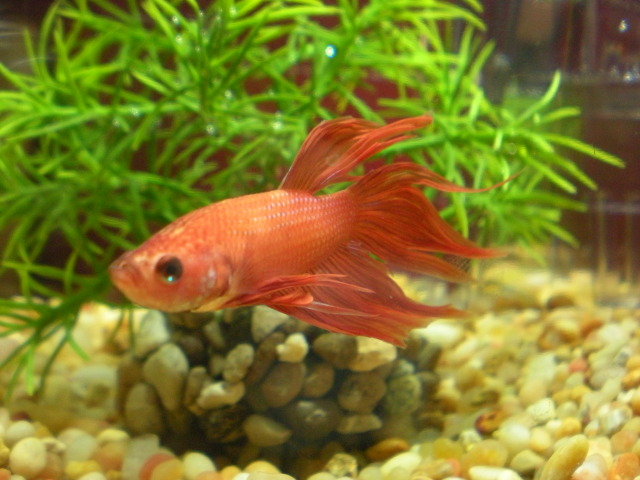 New Betta Antics
Question
Miso
Hello!
I just got my first betta after
New Betta Antics
Question
Miso
Hello!
I just got my first betta after
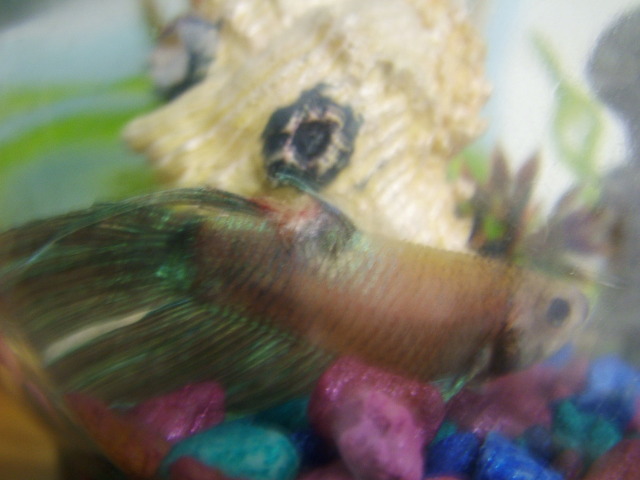 Betta Fish Illness
QuestionMy Betta
QUESTION: My betta has been sic
Betta Fish Illness
QuestionMy Betta
QUESTION: My betta has been sic
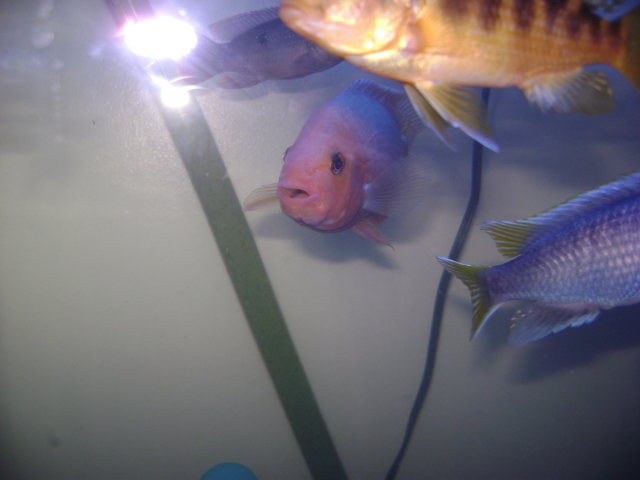 Red Devil ate plastic
Question
Hes the red one in th
Hi Ron I really h
Red Devil ate plastic
Question
Hes the red one in th
Hi Ron I really h
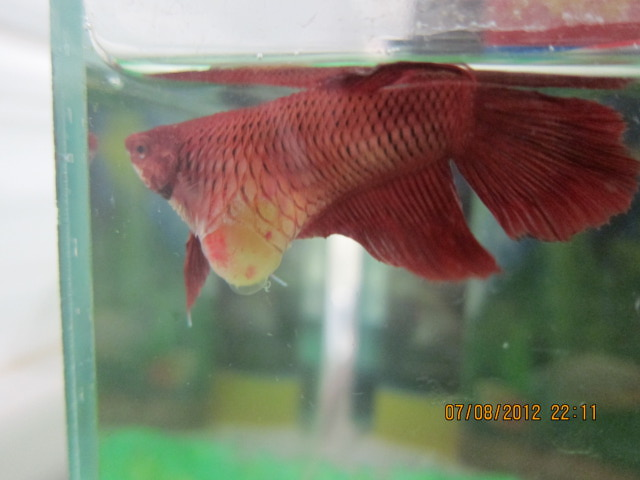 Bloated Belly
Question
My Beta fish Bloated Belly
Hello
Bloated Belly
Question
My Beta fish Bloated Belly
Hello